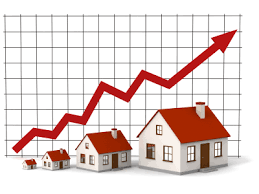Owning is cheaper than renting
Minneapolis, MN: The debate continues. Is owning a home more affordable than renting. New data is in showing that for most people, yes, owning appears to be cheaper than renting.
A survey by the big online company that starts with a Z and rhymes with Willow (I’m not a fan, so I don’t like to use their name) found on average, Americans spend about 15% of their income on a home mortgage loan, while renters that live in the nation’s largest cities spend around 30% of their income on just their rent.
Conventional wisdom says housing debt of 30% of your income or less is deemed affordable.
 The report also looked at other issues effecting homeownership, and found that, just like in the past, coming up with down payment is a challenge for many, and that 13% of home buyers in 2014 got their down payment as a gift from relatives.
The report also looked at other issues effecting homeownership, and found that, just like in the past, coming up with down payment is a challenge for many, and that 13% of home buyers in 2014 got their down payment as a gift from relatives.
Many people are not aware that most home buyers DO NOT need a 20% down payment. Conventional loan programs allow for as little as 3% down payment, and the popular FHA home loan only requires 3.5% down payment. If you are US Military, a VA loan is a no down payment loan. If you are looking to buy in rural areas of the country, the USDA Rural Development loan is also a no down payment loan.
Only if you live in a “high cost” are of the county where even the most modest home costs over $417,000 will you maybe need a larger down payment.
Many areas and potential home buyers also qualify for First Time Home Buyer programs, like the Minnesota Housing Finance Agency Start Up program, here in Minnesota where I am, that will typically loan the new homeowner a big chunk of their down payment money. The program here only requires the buyer to have $1,000 of their own money to buy a home.
Sadly, many renters THINK they can’t afford a home, when statistics tend to prove otherwise. Between small down payment requirements, gifts from relatives, down payment assistance programs, and even taking money from your 401k program for down payment, most people CAN make home ownership work.
Another challenge is debt. Many talk about student loan debt killing home buying for millennials. As a Loan Officer, I simply don’t see it. What I DO see is first time home buyers needing to get back to reality in their home purchase. The term starter home needs to return to the lexicon of home buyers.
Your first home needs to fit into the reality of your income and debts. Therefore, your first home may not be your dream home.
Credit is the final challenge. If you pay your bills on time, you should be just fine. If you don’t, you need to get that corrected first. Realistically, you need to have a middle credit score of 620 or higher. If you have poor credit, you will need to work on improving your credit first. There are NO bad credit loans available.
ARE YOU READY TO BECOME A HOMEOWNER
All mortgage loan applicants need to meet some basic requirements:
– OK or better credit history.
– Stable employment
– Buy a home you can safely afford (known as debt ratios)
– Have some money in the bank
If you are realy, contact a local mortgage broker in your area. Give them a complete mortgage application, and let them zero in on what programs you qualify for, how much house you can afford, what the payments will look like, and how much money you will need to pull it all together.
If it all looks good, you’ll be put in contact with a local expert Real Estate Agent, who will help you select that perfect home.


